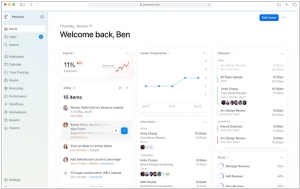JIRA vs Trac
October 17, 2024 | Author: Michael Stromann
82★
JIRA provides issue tracking and project tracking for software development teams to improve code quality and the speed of development. Combining a clean, fast interface for capturing and organising issues with customisable workflows, OpenSocial dashboards and a pluggable integration framework, JIRA is the perfect fit at the centre of your development team.
4★
Trac is an alternative wiki and issue tracking system for software development projects. Trac uses a minimalistic approach to web-based software project management. Our mission is to help developers write great software while staying out of the way. Trac should impose as little as possible on a team's established development process and policies.
See also:
Top 10 Issue-tracking systems
Top 10 Issue-tracking systems
In a galaxy not particularly far away, nor particularly near—actually, just over there in the vast universe of project management tools—there exist two notable entities, JIRA and Trac. Both serve the purpose of organizing the lives of people who can’t otherwise remember what they were supposed to be doing next.
JIRA, which some say was forged in the elaborate imagination of Atlassian (a name that conjures visions of an empire where spreadsheets conquer star systems), is a mighty beast. It comes with all the bells, whistles, flashing lights and peculiar buttons marked “Do Not Push.” It delights those of agile persuasions with customizable workflows, complex reporting mechanisms, sprint planning and an assortment of integration possibilities. It’s the kind of tool you'd take home to meet your parents if your parents were keen on scalability, efficiency and possibly a hint of pretentiousness. It’s beloved by developers managing colossal projects, or at least, it’s not loathed quite as much as the alternative of chaos and sticky notes.
Trac, on the other hand, is more like the trusty hitchhiker of project management tools. Lightweight, open-source and not above wearing a towel on its head when things get too complicated, Trac provides a more straightforward path. It’s for the sorts of teams who scoff at flashy features and prefer a system that says, "You want issues tracked and a nice cozy place in the repository? Done." No extra fuss, no unnecessary explosions of functionality—just simplicity with a dash of efficiency and a pinch of version control.
Where JIRA roars with sophistication and a degree of overbearing grandeur, Trac quietly hums with minimalism and ease. One is for those who dream of ruling empires and managing every conceivable task down to the last nanosecond, while the other is for the ones who just want to get on with it, one hitchhike at a time, hoping not to get too horribly confused along the way.
See also: Top 10 Issue Trackers
JIRA, which some say was forged in the elaborate imagination of Atlassian (a name that conjures visions of an empire where spreadsheets conquer star systems), is a mighty beast. It comes with all the bells, whistles, flashing lights and peculiar buttons marked “Do Not Push.” It delights those of agile persuasions with customizable workflows, complex reporting mechanisms, sprint planning and an assortment of integration possibilities. It’s the kind of tool you'd take home to meet your parents if your parents were keen on scalability, efficiency and possibly a hint of pretentiousness. It’s beloved by developers managing colossal projects, or at least, it’s not loathed quite as much as the alternative of chaos and sticky notes.
Trac, on the other hand, is more like the trusty hitchhiker of project management tools. Lightweight, open-source and not above wearing a towel on its head when things get too complicated, Trac provides a more straightforward path. It’s for the sorts of teams who scoff at flashy features and prefer a system that says, "You want issues tracked and a nice cozy place in the repository? Done." No extra fuss, no unnecessary explosions of functionality—just simplicity with a dash of efficiency and a pinch of version control.
Where JIRA roars with sophistication and a degree of overbearing grandeur, Trac quietly hums with minimalism and ease. One is for those who dream of ruling empires and managing every conceivable task down to the last nanosecond, while the other is for the ones who just want to get on with it, one hitchhike at a time, hoping not to get too horribly confused along the way.
See also: Top 10 Issue Trackers





